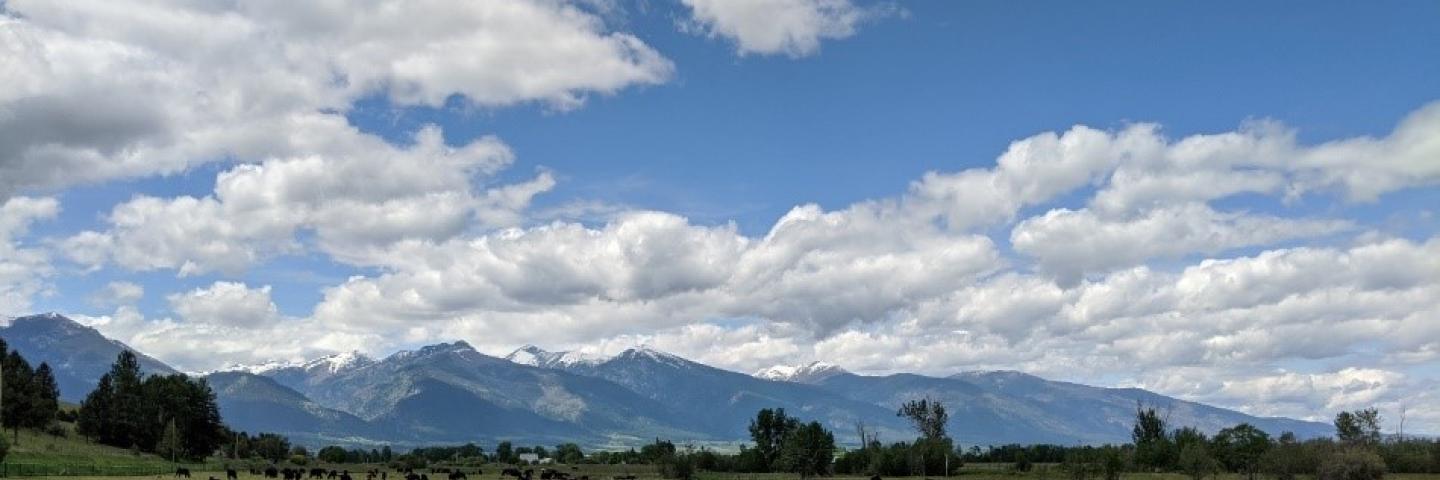Bitterroot Valley Family Protects Ranch through Conservation Easement

In March, landowners Larry and Sheilah Melsness celebrated completion of the South Burnt Fork Ranch project with Bitter Root Land Trust, which conserved 301-acres in the Bitterroot Valley.
Story courtesy of the Bitter Root Land Trust.
In March, landowners Larry and Sheilah Melsness celebrated completion of the South Burnt Fork Ranch project with Bitter Root Land Trust, which conserved 301-acres in the Bitterroot Valley.
The Melsness’ decision to conserve their property is a continuation of the conservation momentum that exists in the Burnt Fork drainage, near Stevensville, Montana. The South Burnt Fork Ranch sits at the center of the historic and predominantly agricultural Burnt Fork drainage, tying together 2,100 acres of contiguous private land conservation easements. This neighborhood has maintained its agricultural heritage and infrastructure for over a century. Today, it is home to dozens of working farms and ranches, including over 6,600 acres in conservation easements. An abundance of agriculturally important soils and irrigation water make the Burnt Fork one of the most productive neighborhoods in the Bitterroot Valley.
Located in the heart of the Burnt Fork, and surrounded by many neighboring farms and ranches, the South Burnt Fork Ranch plays an important role in this landscape. With over 240 acres of agriculturally important soils, this ranch supports a cow-calf and horse operation, as well as a productive hay operation.
The Burnt Fork is also important habitat for a variety of wildlife, with the riparian corridors along the various creeks serving as primary arteries between the Bitterroot River and the mountains to the east. The South Burnt Fork Ranch provides a diverse mosaic of agricultural grassland, meadows, wetlands, and stream and riparian habitats that collectively support a diverse array of wildlife. The Montana Natural Heritage Program has documented twenty-four wildlife Species of Concern on or around the property, including westslope cutthroat trout, golden eagle, bald eagle, great blue heron, long-billed curlew, veery, bobolink, pileated woodpecker, Lewis’ woodpecker, and western toad. The ranch also provides habitat for locally important species such as raptors, songbirds, Sandhill crane, elk, and mule deer, with habitat value which is magnified by its adjacency to surrounding conserved private lands.
The project was made possible through funding from the NRCS Agricultural Land Easement (ALE) program, the Ravalli County Open Lands Bond program, and donations from the landowners.
Conservation of the South Burnt Fork Ranch will build upon the existing conservation momentum in the Burnt Fork, and hopefully inspire further conservation easement projects in the neighborhood. This neighborhood conservation results in a significant impact for the public by conserving the Bitterroot agricultural heritage, economy, water resources and open spaces.
Thanks to the Melsness’ and the project’s funding partners, this part of the Burnt Fork neighborhood will remain available for agricultural use, intact for wildlife, and with preserved scenic open space views for future Montanans, in perpetuity.

